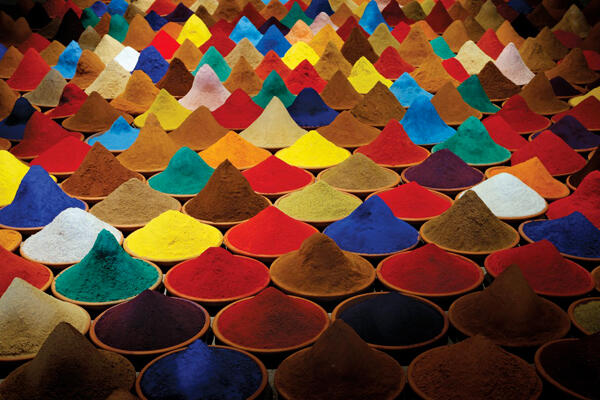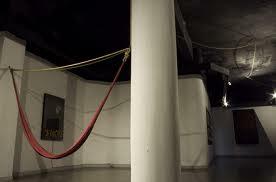The Latin American Pavilion: Subjective Cartographies at the Biennale di Venezia
“El Atlas del Imperio” (The Atlas of the Empire) the exhibition presented for the Latin American Pavilion of the Istituto Italo-Latinoamericano (IILA), inside the venue of Isolotto dell'Arsenale, was organized by Sylvia Irrazábal, IILA´s commissioner, with Alfons Hug as curator and Paz Guevara as co-curator.

The project enriches the concept of the 55th International Biennale di Venezia, which title is Il Palazzo Enciclopedico / The Encyclopedic Palace .
The director of the 55th International Art Exhibition, Massimiliano Gioni, introduced the choice of theme evoking the artist self-taught Italian-American Marino Auriti that on November 16, 1955 filed a design with the US Patent office depicting his Palazzo Enciclopedico (The Encyclopedic Palace), an imaginary museum that was meant to house all worldly knowledge, bringing together the greatest discoveries of the human race, from the wheel to the satellite. Auriti’s plan was never carried out.
“Like the theatres of memory devised in the 16th century by Venetian philosopher Giulio Camillo - mental cathedrals invented to order knowledge through pictures and magical associations - the exhibition “Encyclopedic Palace” will compile - concluded Gioni - cartography of our image-world, composing a bestiary of the imagination.”
The Latin American Pavilion´s exhibition departs from an exploration of the play between the map and the territory retaken in the story of the Argentinean writer Jorge Luis Borges who describes, in "On Exactitude in Science", the attempt of the Cartographers to draw "(...) a Map of the Empire whose size was the same as the actual Empire, and which coincided point by point with it (...)". Also, the curator Alons Hug quotes thoughts and visions form Carlos Fuentes and from "Invisible Cities" by Italo Calvino.
His curatorial text explains the concept of the invitation received by the following artists to present their own cartography of the present: Marcos Agudelo, Silva Avária, Anna Azevedo, Miguel Alvear and Patricio Andrade, Susana Arwas, Harun Farocki & Antje Ehmann, Paula Barreto, Fred Benevides, Anna Bentes, François Bucher, Hermano Callou, Renata Catharino, Fredi Casco, Humberto Díaz, Sonia Falcone, Lucas Ferraço, André Herique, Nassif Luiz Garcia, Christian Jankowski, Guillermo Srodek Hart, León & Cociña, Lucía Madriz, Bruna Mastrogiovanni, Pascal Meccariello, Cezar Migliorin, Raquel Paiewonsky, Jorge Pineda, Jhafis Quintero, Collettivo Quintapata, Belkis Ramírez, Felipe Ribeiro, Roberto Robalinho, Martín Sastre, Juliana Stein, Patrick Sonni Cavalier, Simón Vega, Luca Vitone, Bruno Vianna, Beny Wagner, and David Zink Yi.
Arte al Dia International reproduces an apart from Hugh’s curatorial text:
Art and the atlas
In his literary simile, the Argentinean author raises the question of the representation and portrayability of the world – a question so decisive to both science and art.
The map is useless the moment it is as big as the Earth. But how big is art? And how big is hell? – enquired Galileo Galilei in his lectures on Danté’s Inferno at the Florentine Academy in 1587-88. At the time, people still believed it was possible to measure even the most unlikely of spaces.
Since Robert Smithson created his Spiral Jetty – that masterpiece of land art – at the latest, we have become aware of the difference between size and scale: the former defines an object, the latter a work of art. Something that may be small physically, may seem gigantic as a work of art.
The rule that a map cannot be identical with the world also applies to art. A map, as everyone knows, is not the territory it represents; and art cannot represent the world on a scale of 1 : 1 without running the risk of becoming pure documentation and, therefore, redundant.
Whereas science and technology strive to become as big as the world, and fail regularly in this hubris, art is simultaneously smaller and bigger than the world. Smaller, because it can show only bits of the world and reality, and bigger because it proceeds allegorically and thus rises above both.
Basically, the map and art proceed in similar ways inasmuch as they both abstract from real dimensions. Art, of course, begins where the map is uneven, full of gaps, and incomplete. In this respect, it resembles those old parchment maps in which entire regions became terra nullius.
Art will also find those places – merely imagined and not yet discovered – that the great Khan and his ambassador Marco Polo had sought in vain in the atlas of Italo Calvino's "Invisible Cities", including Yahóo, Babyland, and Enoch.
In his encounters with the Khan, Marco Polo also made use of non-verbal forms of communication. The Venetian initially circumvented communication difficulties by using sign language, and later by taking sacks full of objects with him from all over the world: hourglasses, arrows, drums, plants; in short, things that perhaps told of conditions in the Khan's realm more clearly than words could – in whatever language.
One reason why modern art has been making use of such objects for 100 years is, not least, to correct one-dimensional verbal communication. The Venice Biennale is such a privileged place of polyglot exchange.
In contrast to the Emperor’s cartographers, who, in their obsession with perfection, have tried in vain to make maps and reality to correspond with one another, artists do not always choose the shortest distance between two points. They will put stumbling blocks in their way and sketch in the wrong routes. They will discover locations that appear only temporarily on the maps, and others that have found their place there once and for all. Venice comes under the latter category. Its arsenals, which formed the biggest industrial undertaking in Europe during the Middle Ages, were immortalized by Dante Alighieri in his Divine Comedy:
With their symbolic cartography, artists are less concerned with topographical precision than with making selective observations of seemingly irrelevant details in interpersonal relationships, or of the baneful conditions in the present.
Artists step on the stage only at that moment in which scientists interrupt their arrogant projects and expose their useless world maps to the inclement of the weather.




